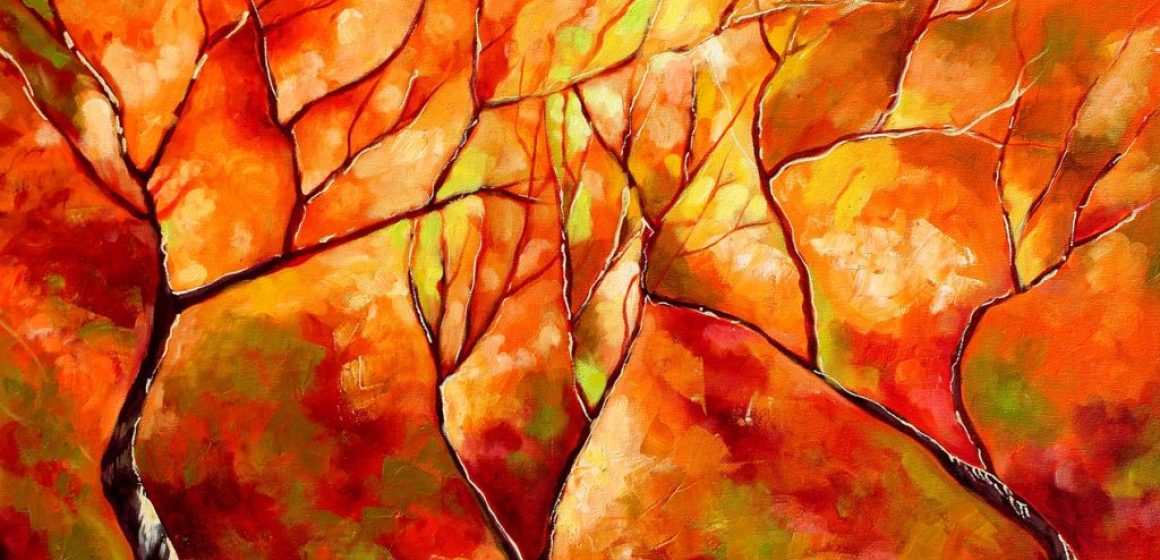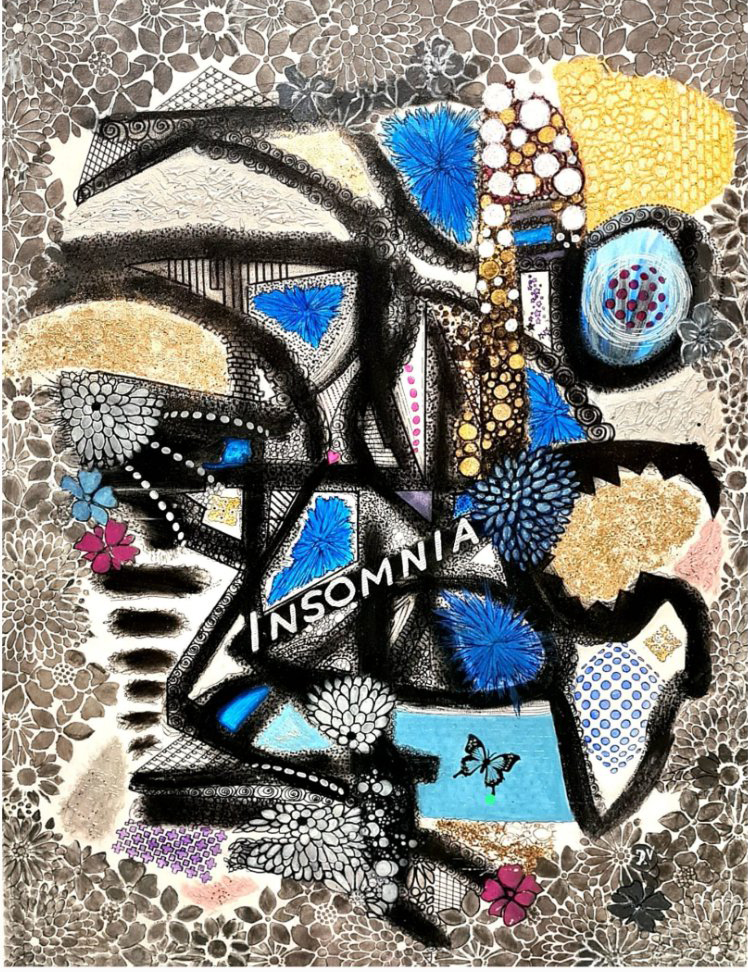Would you imagine, for instance, looking at a painting as if it were telling a secret story? Maybe that these colours are trying to say something to you or the forms move and tell a story? That is the charm of abstract art; Denora’s art is an ideal illustration of this! Think of a planet on which art does not have to resemble real creatures, flowers, or people. Instead it uses forms, colours, and lines to narrate a story or provoke a feeling.
Abstract art is all about it – an enigmatic language that directly reaches your soul and psyche.
Denora uses symbols. The simbols are small riddles make a bigger picture. be anything – circles, squiggles, even blotches of paint. As each symbol has a meaning in a story, the beginning and end of a story is to be found out. What do you feel when you listen to music that you enjoy? Music can make you joyful, melancholic, or revved up, can’t it? Denora’s paintings are a similar way of expressing emotions. The colours she selects, the design, and the forms she uses create feelings. But, unlike a song with lyrics, Denora allows you to define what the feeling should be!
The designs she makes are suggestions to guide you through the riddle of the painting, sort of hints. A circle can refer to the sun, for instance, which will warm you and bring a smile to your face. Or think of a zigzagg line that stands for a wild stream, fast and living – you get the idea of creative freedom? You decide! What is really good about abstract art, particularly Denora’s works, is that there is no one right answer. It is just like looking at a cloud – one might imagine a fluffy sheep, another might see a pirate ship!
Why there’s no right answer?
Once you have a painting of Denora’s, you have a puzzle with missingpieces. That must be the mind teaser – certain geometrical forms and hues on one hand and your beautiful engineer of fantasy on the other hand supplies the missing pieces.The work reaches an interpersonal level. You kind of join it,find the brightness of your place, and perhaps also the depths of your sensitivity as a representation of harmony with yourself.
In addition, try holding a picture with a remarkable big red circle in the centre. If your memory can recall the childhood days of sunny barbecues, the vision might bring you there. On the other handyou could think of a red apple just bitten. The interpretation is the outcome of your personal story.
She doesn’t only throw together different shapes and colours hoping to see what sticks to the canvas. She doesn’t overdo it with chaos. Denora has written a symphony using this harmony with form as the key to it.
Let’s have a look at her equipment:
Shapes:
Circles are also symbols of unity, while squares denote stability. Asquare represents stability and is structured within a system. Trianglesbring experiences of vigour and dynamism; squiggly lines depict movement and flow.
Colours:
Bright colours such as red, orange, and yellow might bring happiness and adrenaline. Blue, green, and purple shades can instill tranquility, peace,fulfilment. Denora may use really striking colours to catch you and then softly shift to softer colours to make the atmosphere alarming.
Brushstrokes:
The stroke and the technique indicate one of Denora’s intentions of moulding meaning behind a picture. On one hand thick lines representing power or intensity, on the otherthin linessuggesting lightness and gentleness.
Denora uses such tools to put across her sentiments, thus interfacing of animage with abstract meaning becomes possible.
The power of storytelling in abstract art
Denora has revealed that the purpose of her abstract painting is not just to use pretty colours and shapes. It’s a way to communicate stories through painting without words. Not only dopicturestellstories of nature, but every number of symbols here gives an additional information to this canvas.Consider a dark painting with sharp jagged lines. It may depict a stormfull of power and chaos.
However, a colourful and softly themed painting, such as a meadow in bright sunlight, could be another story of nature. The sky is the limit!The most beautiful thing is that the story can go in different directions every time you turn your eyes to the canvas. Perhaps you will interpret the canvas as Denora sees it – as an expression of loneliness – one day and as a representation of hope the next day. It is all about your mood and the situation you are in.
Denora’s art can be imagined as a journey through the realms of the soul. The art may be experienced as a road map to the land of emotions and stories hidden beneath different tones, shapes, and symbols. You are not obliged to give the right answers, but rather a chance to relate to the art on a personal level. Walking into a place where your ideas are the only limitation is the best way to get there.
The connection between Denora’s art and music
Do you remember that Denora is also a musician? She connects the love of music and the passion for art to create unique paintings. She pictures shapes and colours as musical notes each of which can be considered a part of the whole musical.
Similar to music being able to produce feelings, Denora’s modern art intends to achieve a parallel effect. The colour of the canvas is related to the jazzy trumpet solo. Denora’s abstract paintings are much more than just paint on canvas; they areportals to a world of emotions, stories, personal connections. They allowto explore your creativity and imagination, leading to a much deeper understanding and admiration of the beauty of the abstract art.
The most interesting part? Her art is not stagnant. Everybrushstroke makes her art different with new enigmas for you to solve and a new story for you to unveil. So go through Denora’s gallery and take a deep dive into the amazing world of her breathtaking abstract works!
Experience the feelings that they bring. Build dreams and make up an infinite number of stories that each piece hides. Let me remind you that there is no correct or wrong answer, but it is an opportunity to personally identify the artwork.
Denora’s art encourages you to reach the depths of your creativity. So calm down, get lost in her artistic world, and let the journey begin!
Click here to view her latest abstract pieces and immerse yourself in a world where every brushstroke tells a story, and every symbol invites you into a realm of visual exploration and emotional resonance.
Conclusion
Abstract painting has had a profound impact on the art world, challenging traditional notions of representation and encouraging individual interpretation.
Through its expressive language of form, color, and gesture, abstract art opens doors to emotions, experiences, and ideas that transcend the boundaries of realism.
From its early pioneers to contemporary practitioners, abstract painting continues to captivate viewers, offering a space for introspection, imagination, and personal connection.
It is a testament to the enduring power of art to communicate the intangible and evoke profound responses in the hearts and minds of its audience.



